
Marvis Virtual Network Assistant
The first AI-driven Virtual Network Assistant (VNA) service that transforms how your IT teams interact and engage.

Overview:
Meet Marvis, the first AI-driven Virtual Network Assistant (VNA) service that transforms how your IT teams interact and engage with enterprise networks to streamline operations and boost user experiences. The days of memorizing CLI commands and stitching dashboards together are over. When experience is the new uptime for the AI-Driven Enterprise, you need to get answers in real time, just as your end users expect to have their issues resolved quickly.
Key Features
- The Conversational Interface uses natural language to understand user intent
- Marvis Actions automatically takes actions or provides recommendations to proactively fix an issue before users know it exists
- Android client enables a view of the network from inside out, from the device's perspective
- Integrated technical documentation and supporting assets
- Real-time insights and simplified troubleshooting at the client, device, and site level
Product Description
Our Virtual Network Assistant (VNA), Marvis, is the digital network expert that supports your own team of network experts-network administrators, site reliability engineers (SREs), or anyone based in network operations centers (NOC). Marvis is the first network assistant in the industry to bring conversational AI to networking, transforming the way IT teams interact and engage with enterprise networks.
In the era of AIOps, Marvis delivers streamlined operations, simplified troubleshooting and remarkable user experiences. Since 2016, the Mist AI engine has applied various data science tools to continue to learn and improve, expanding its knowledge base as it becomes a fundamental component of The Self-Driving Network™.
A Conversational, Interactive MIST AI Interface
Conversational interfaces have come a long way to become a part of our everyday lives, evolving the way humans interact with computers-the most well-known ones being Siri, Cortana and Alexa. It has become an area of strategic investment across several industries, including banking, retail, healthcare, etc. as organizations look to streamline operations and deliver personalized experiences to end users. And now, Juniper Mist is the first to bring a conversational interface enterprise networking, driven by Mist AI.
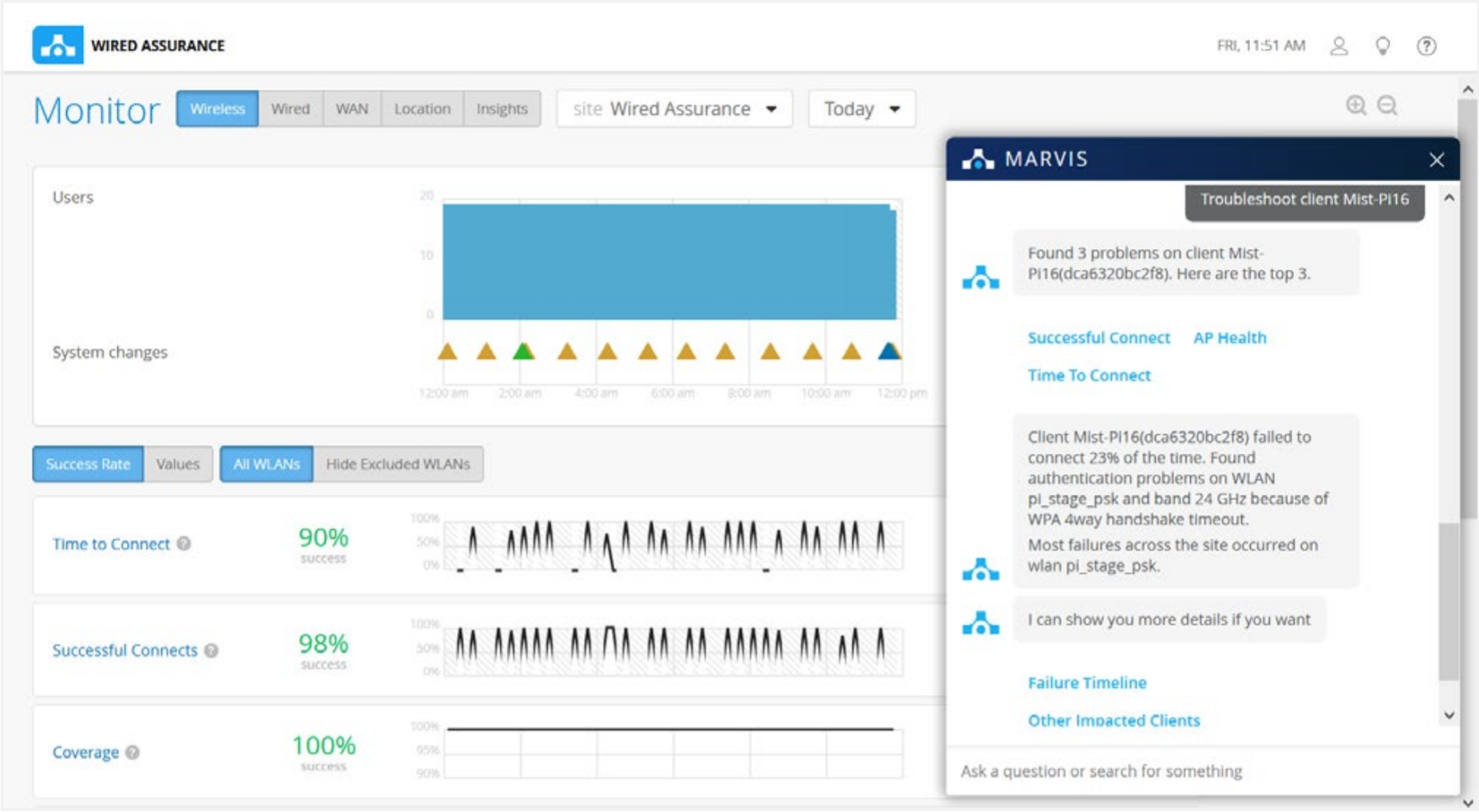
Marvis enriches its Natural Language Processing (NLP) capabilities with Natural Language Understanding (NLU) and Language Generation (NLG) to offer a conversational interface that understands user intent and delivers improved value and quality of returned results. The power of the Marvis conversational interface is that it can contextualize requests to accelerate troubleshooting workflows, automate responses and make intelligent decisions or recommendations to:
- Get real time answers about the network in a few clicks
- Troubleshoot issues for rapid resolution by taking action directly in the conversation
- Deduce user intent from general statements and inquiries using advanced NLP with NLU and NLG
- Improve specific user experiences by learning from user feedback
- Ask generic questions beyond troubleshooting, like "What are you?" or "What is the weather?" or "How many iPhones are connected?" and "What was the number of peak devices in the office last week?"
Marvis is the one stop shop for IT teams to understand the state of the network. They no longer have to memorize CLI commands or know which dashboards contain the relevant information. When the answers are available at your fingertips, it significantly transforms the way IT teams experience and interact with the network.
Features and Benefits:
The Self-Driving Network with Marvis Actions
Marvis Actions is about driving operational simplicity and transforming IT to go from reactive troubleshooting to proactive remediation. It offers a "morning cup of coffee" view which brings visibility into high impact network issues at an organization level so that administrators know exactly what they need to prioritize and focus on for the day. As sites get added, Marvis Actions scales with ease as no additional actions are required from the user.
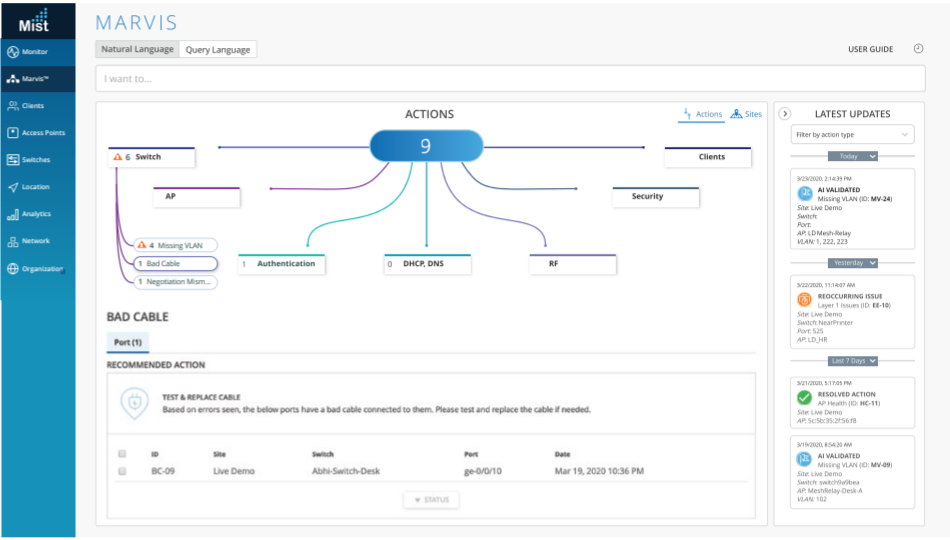
Anomaly Detection
Marvis incorporates anomaly detection within SLEs so administrators are notified of service impacting events and can quickly identify and resolve the root cause of issues. Anomaly detection triggers notifications when there is a deviation from known standards. Our anomaly detection feature leverages our third generation of algorithms in long-short term memory recurrent neural networks to boost efficacy over 95%, minimizing false positives.
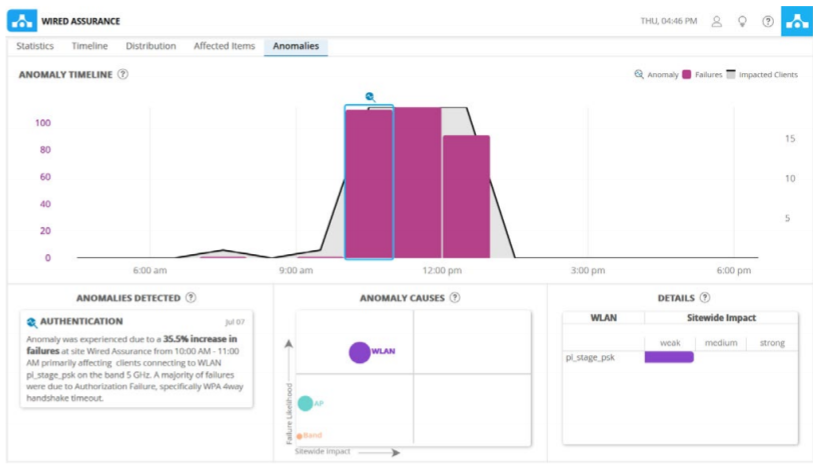
Client Service Level Expectations (SLES)
Marvis automates troubleshooting and support so IT teams can get to shorter mean time to resolution and faster mean time to innocence. It presents a comprehensive network view with user, client and device insights, eliminating the need to pull up multiple dashboards or memorize CLI commands. Marvis is an extension of the IT team-it combs through data and logs to determine root causes and provides answers in real time with high efficacy.
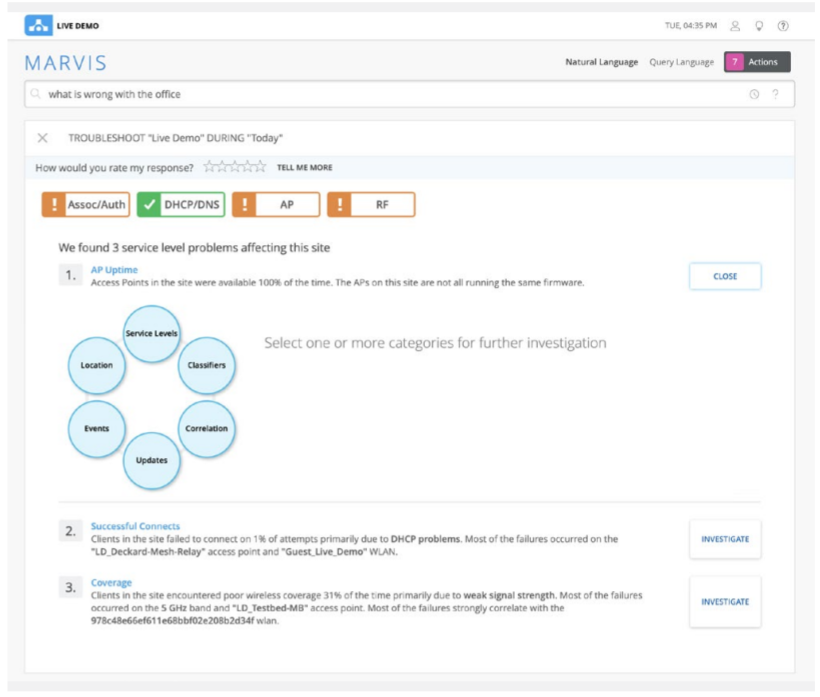
Real Time Insights and Simplified Troubleshooting
Marvis complements the client SLE framework. It applies machine learning to track and monitor client and device experiences with continuous behavioral analytics and network traffic analysis. The ability to understand their trends gives IT deeper insights for troubleshooting and planning.
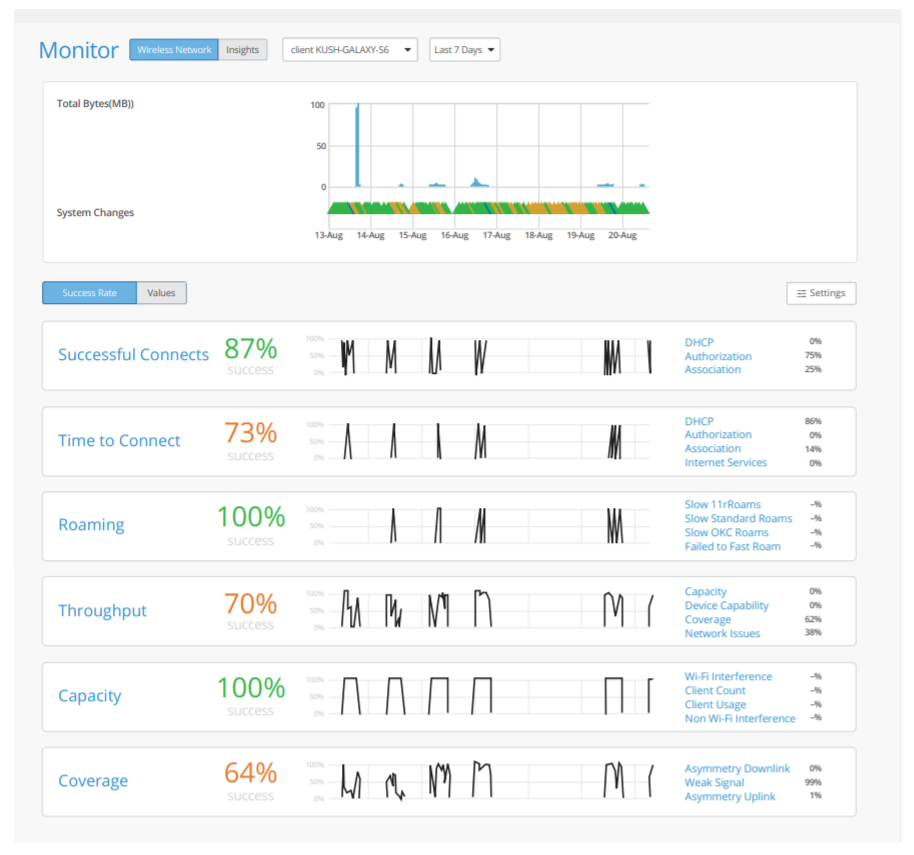
The Marvis Client Software Development Kit (SDK)
For setup (currently Android only), the Marvis Client SDK can be integrated into a custom app, or as part of the location SDK via MDM. The Marvis Client SDK provides an agent that sits on the end user device for granularity of client properties. The information provides insight into client roaming algorithms since roaming is a client decision. Additionally, the Marvis Client SDK recognizes device connection types-cellular or Wi-Fi-based on corresponding signal strength. This additional level of granularity lets admins better understand the Wi-Fi experience directly from the client's perspective.

Additionally, the Marvis client SDK further enriches the client device data leveraged in service levels. It goes beyond basic device fingerprinting to provide supplemental details into properties such as device type, manufacturer or even different versions of operating systems. The more details the client SDK can draw out, the better the Mist AI engine gets at advanced device classification (e.g. Google AI learning to recognize dogs, then identifying specific dog breeds like poodles, bulldogs, etc.). As Marvis collects and learns from this data, it gets more accurate in its ability to identify between device specific issues or broad device issues, such as indicating that a specific OS version 8.1.0, for example, is affecting a number of certain clients.
Documentation:
Download the Marvis Virtual Network Assistant Data Sheet (PDF).
